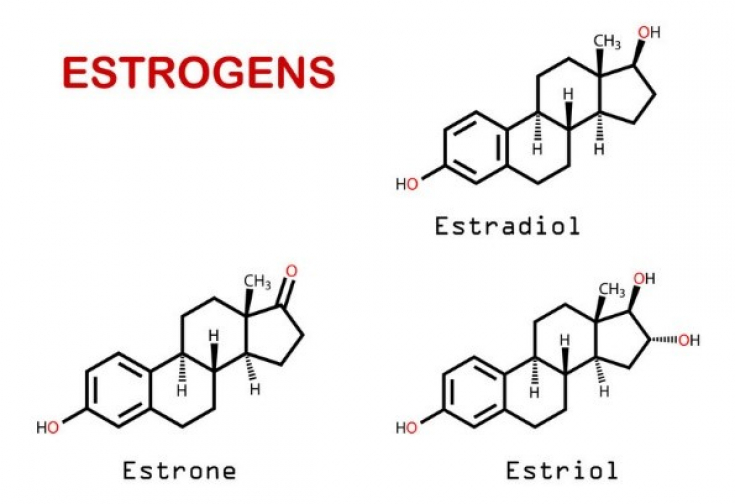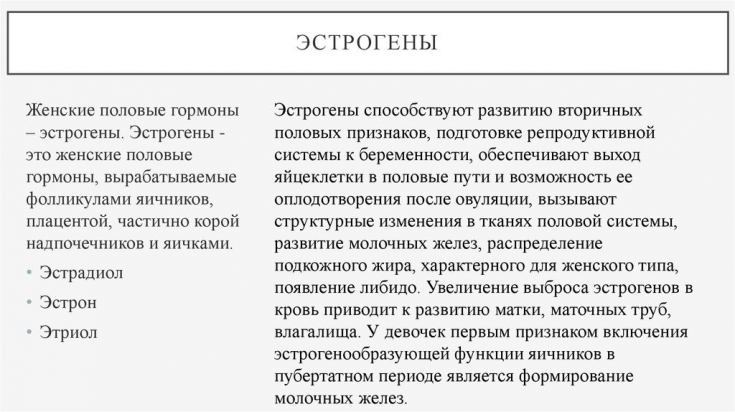Population aging is an important socio-demographic process that receives special attention. In the 21st century, in the developed countries of the world, the number of people aged 55 years and older has increased from about 4 to 13%, that is, there is an upward trend in this indicator. It is this demographic situation that has led to increased attention to research questions in the field of aging, especially in relation to age-related changes. Change in the condition of the skin is part of the overall biological process of aging and is determined by the same laws. Find out in the article on estet-portal.com how the skin reacts when the level of estrogen in the body of a woman is disturbed.
- skin condition as a target of the endocrine system
- Estrogen influence on collagen and elastin synthesis
- basic skin changes in estrogen deficiency
Skin condition as a target of the endocrine system
With age, we observe not only age-related changes in the skin, but also physical activity and sexual desire decrease, and chronic fatigue increases. The reason for these problems lies in the fading of the function of the reproductive system against the background of general aging of the body.
Follow us on Instagram!
The skin is the first to react to changes in the body, and also takes on the action of exogenous (climate changes, UV radiation, lifestyle, etc.) and endogenous factors. An important endogenous factor in skin aging, especially in women, is the state of the endocrine system. The age periods of a woman are characterized by certain changes both in the reproductive system and in the whole organism as a whole.
Read also: Properties of hyaluronic acid. Wrinkle filling methods. Blanching
This process can begin long before the onset of menopause (approximately at 35-40 years old) and depends on how strong the sexual constitution and the healthy body of the woman as a whole are. The perimenopausal and menopausal periods are different for every woman.

In some individuals, changes in the body in general and in the skin occur gradually, but most women experience rapid and significant changes during these periods, the key point of which is a sharp decrease in estrogen production by the ovaries, which is significant affects skin function.
The effect of estrogen on the synthesis of collagen and elastin
Estrogen stimulates the division of the basal cells of the epidermis, enhances the synthesis of collagen, elastic fibers and hyaluronic acid by fibroblasts, thus, estrogen contributes to the firmness and elasticity of the skin. During the premenopausal period, the amount of estrogens and blood vessels is significantly reduced, so the collagen fibers "stick together", the skin loses its elasticity and firmness.
Read also: Perioral dermatitis or "stewardess disease": combined treatment
Due to estrogen deficiency, there is a decrease in the production of fat by the sebaceous glands, which further worsens the condition of the skin. As a result, the release of glycosaminoglycans in the skin is disrupted, which leads to a decrease in the synthesis of collagen, one of the key components of the skin. During these periods, the skin begins to age more quickly.
In the first 5 years of menopause, a woman can lose up to 30% of collagen, in postmenopause, the rate of its loss is reduced to 1-2% per year.
The structure of the skin is disturbed, the skin becomes more flabby, thinned, easily damaged and slowly restored. Dry skin, dehydrated, pronounced wrinkles are characteristic signs of menopausal syndrome and, accordingly, a lack of estrogen. The greatest number of estrogen receptors has the skin of the face, neck, chest (décolleté zone); therefore, changes in these areas during menopause are the most predictable.
Basic changes in the skin condition with a lack of estrogen
Thus, it is possible to identify the main changes in the skin condition in women of the perimenopausal and menopausal periods:
- dryness of the skin, as a result of its peeling;
- lethargy, thinning, loss of elasticity;
- faster formation of wrinkles.

Cosmetic changes in the condition of the skin have a serious impact on the psyche of women: they begin to look older and less attractive. The appearance of the skin is associated with ideas of beauty, therefore, in women in the perimenopausal and menopausal periods, self-esteem may be impaired, and the loss of self-confidence leads to a violation of the quality of life. The age category of patients leading an active lifestyle in society is 40-65 years. These women have a fairly high professional experience, but they also have "baggage"; somatic diseases, limits the use of many methods of rejuvenation.
Follow our updates on Facebook!
The development of new methods for correcting age-related changes in the skin of the face with a pronounced clinical effectiveness and maximum safety for patients is topical. Methods for correcting age-related skin changes include conservative and surgical procedures. The most interesting and in demand today are conservative methods that allow maintaining and restoring "youth" without interruption from social life. skin.
Conservative methods are represented by physiotherapy, injection and topical application of drugs. External application of preparations based on hyaluronic acid, as well as the use of a complex of injectable cosmetic procedures, can make wrinkles less noticeable, even out complexion, and also enrich it with moisture.
More useful information on our YouTube channel:







Add a comment